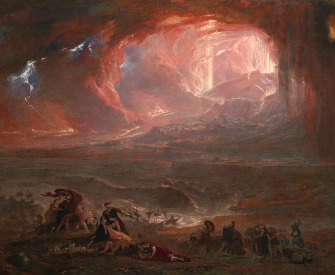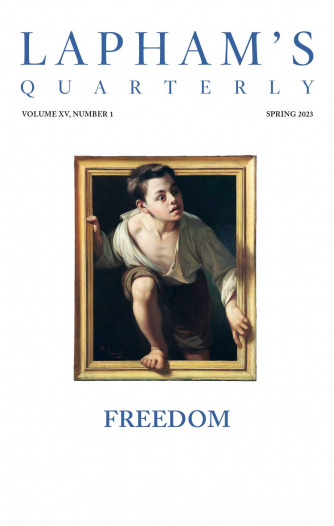At the instance of several friends who feel a boding anxiety to know beforehand what sort of phenomena we may expect the elements to exhibit during the next month or two, and who have lost all confidence in the various patent-medicine almanacs, because of the unaccountable reticence of those works concerning the extraordinary earthquake of October 8, I have compiled the following almanac expressly for the latitude of San Francisco:
October 17
Weather hazy; atmosphere murky and dense. An expression of profound melancholy will be observable upon most countenances.
October 18
Slight earthquake. Countenances grow more melancholy.
October 19
Look out for rain. It would be absurd to look in for it. The general depression of spirits increased.
October 20
More weather.
October 21
Same.
October 22
Light winds, perhaps. If they blow, it will be from the “east’ard, or the nor’ard, or the west’ard, or the south’ard,” or from some general direction approximating more or less to these points of the compass or otherwise. Winds are uncertain.
October 23
Mild, balmy earthquakes.
October 24
Shaky.
October 25
Occasional shakes, followed by light showers of bricks and plastering. N.B. Stand from under!
October 26
Considerable phenomenal atmospheric foolishness. About this time expect more earthquakes, but do not look for them, on account of the bricks.
October 27
Universal despondency, indicative of approaching disaster. Abstain from smiling or indulgence in humorous conversation or exasperating jokes.
October 28
Misery, dismal forebodings, and despair. Beware of all light discourse—a joke uttered at this time would produce a popular outbreak.
October 29
Beware!
October 30
Keep dark!
October 31
Stand by for a surge!
November 1
Terrific earthquake. This is the great earthquake month. More stars fall and more worlds are shied around carelessly and destroyed in November than in any other month of the twelve.
November 2
Spasmodic but exhilarating earthquakes, accompanied by occasional showers of rain and churches and things.
November 3
Make your will.
November 4
Sell out.
November 5
Select your “last words.” Those of John Quincy Adams will do, with the addition of a syllable, thus: “This is the last of earthquakes.”
November 6
Prepare to shed this mortal coil.
November 7
Shed!
November 8
The sun will rise as usual, perhaps; but if he does, he will doubtless be staggered somewhat to find nothing but a large round hole eight thousand miles in diameter in the place where he saw this world serenely spinning the day before.
From “A Page from a California Almanac.” Samuel Clemens signed his first newspaper article “Mark Twain” in 1863, publishing two years later this light piece and “Jim Smiley and His Jumping Frog”—the latter bringing him national recognition. Around the same time he observed that he had a “‘call’ to literature of a low order—i.e., humorous.” Twain published Innocents Abroad in 1869, Tom Sawyer in 1876, and The Adventures of Huckleberry Finn in 1885.
Back to Issue



